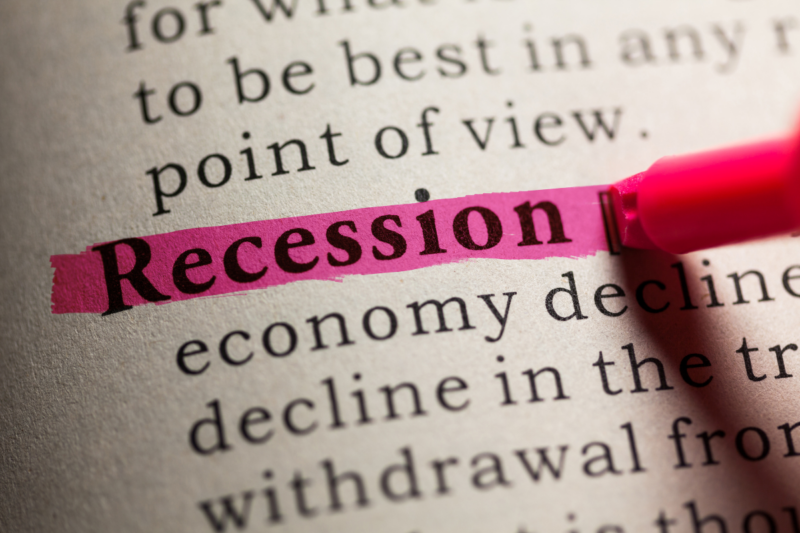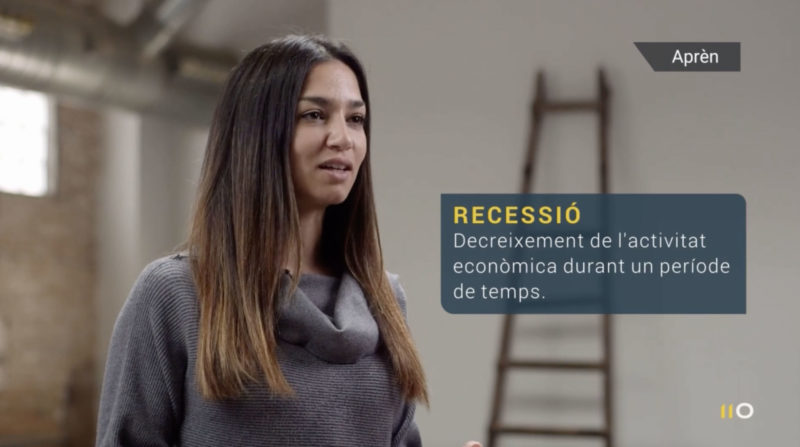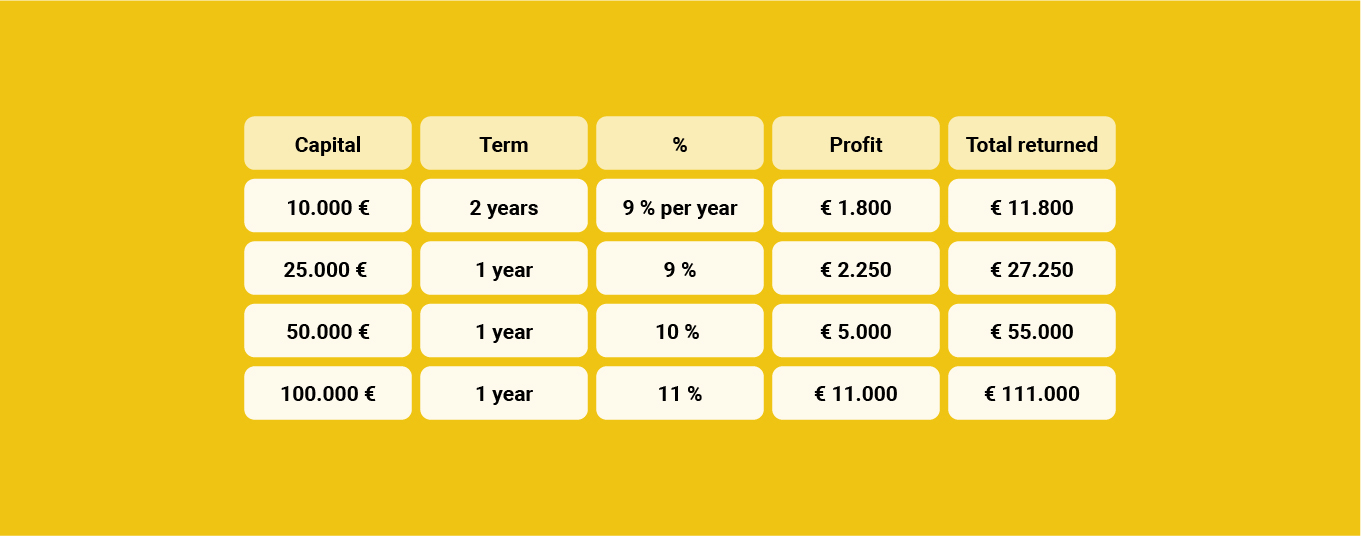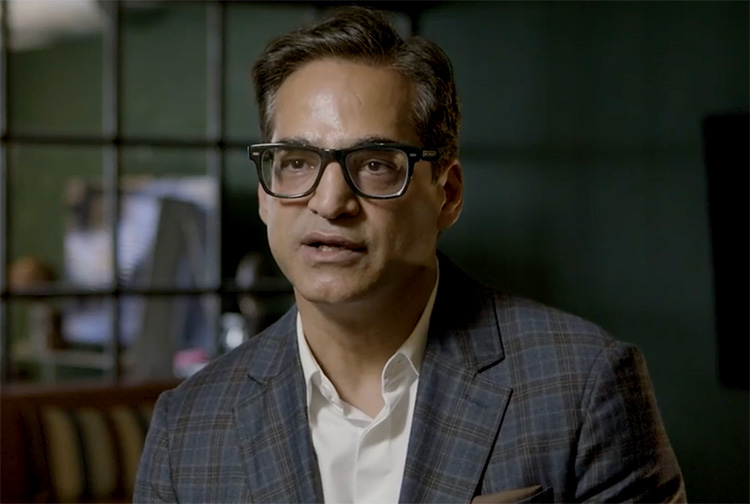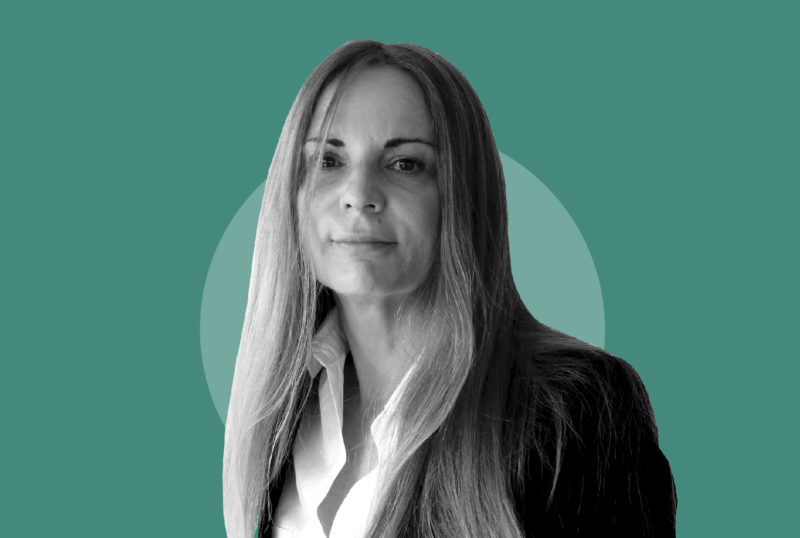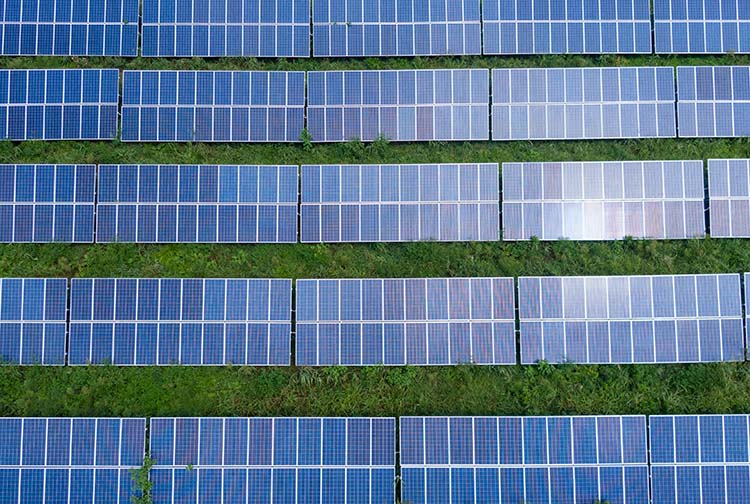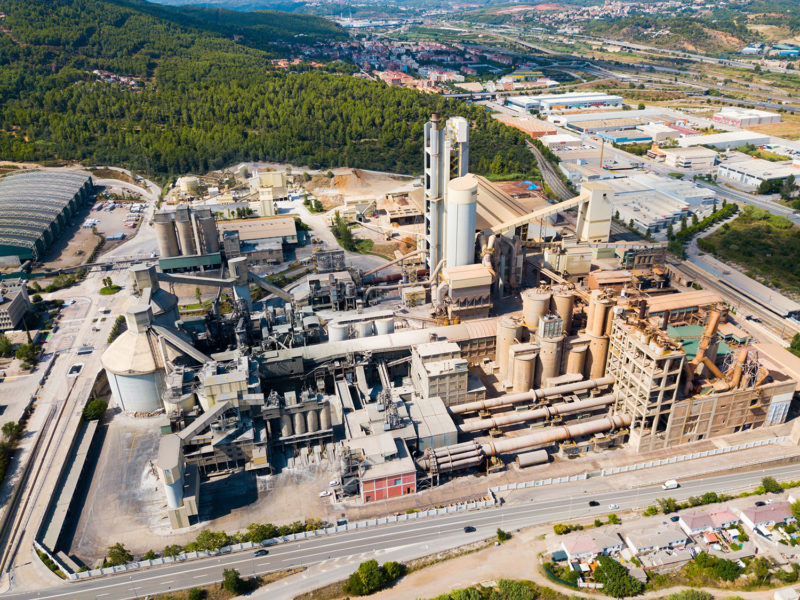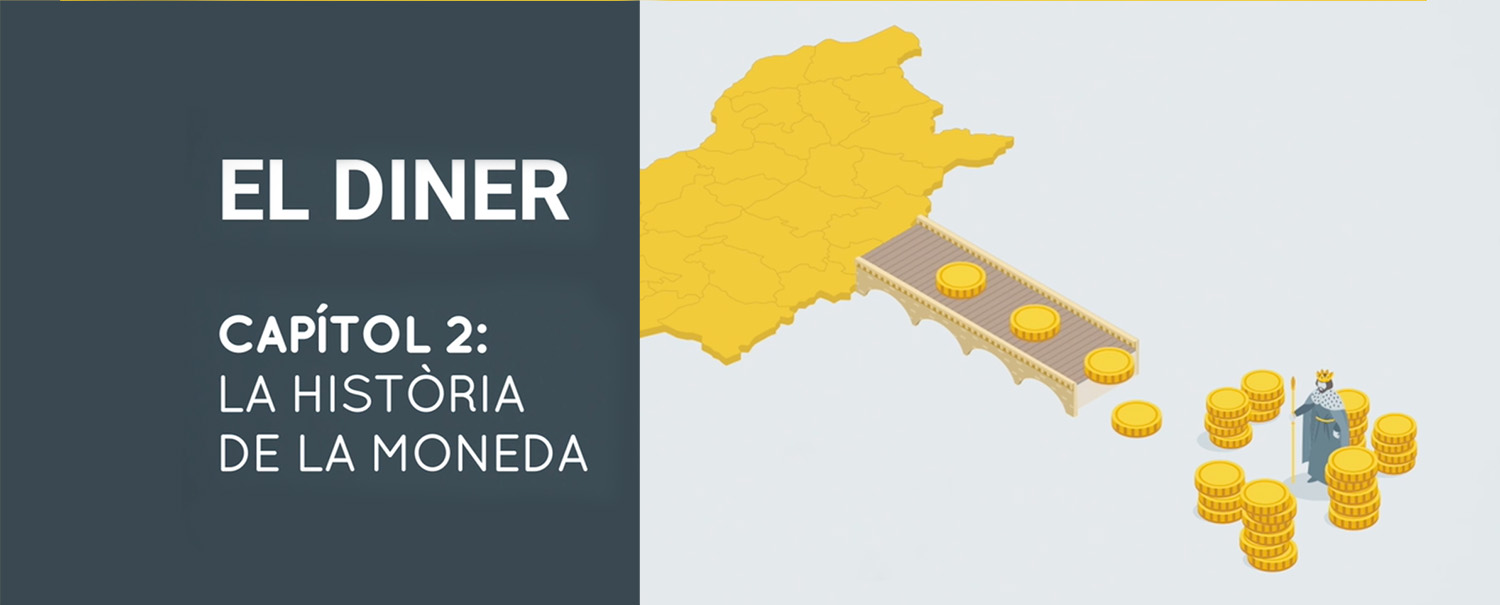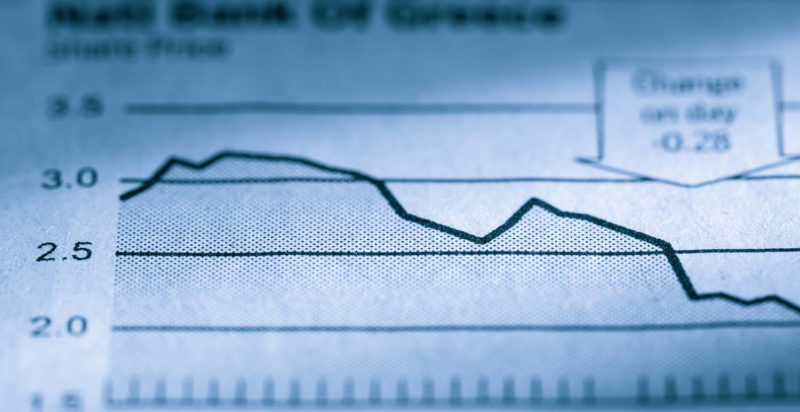The State expects massive demand for gold coins
On 21 February the Fábrica Nacional de Moneda y Timbre (FNMT) received authorisation from the Council of Ministers to formalise the purchase of 40 million euros in gold. The intention is to mint investment coins and offer them as safe-haven assets against inflationary pressure and market volatility.
It is no secret that in front of an economic crisis, gold is a highly appreciated asset for investors. World gold demand rose 18% in 2022 to 4,741 tonnes, the highest in over a decade. Gold purchases by governments and central banks soared to a record 1,136 tonnes not seen in 55 years.
Given the current context of inflation, market volatility, bank failures, the low return that banks are offering on deposits, and the rising interest rates of the European Central Bank (ECB), it is not surprising that not only central banks but also more and more investors are diversifying their portfolios into tangible, low-risk securities such as gold.
Investment coins, also known as bullion coins, minted in precious metals, generally gold and silver, play a key role in this savings diversification. The numismatic value of a coin’s craftsmanship, design, historical significance, commemorative value and physical condition can drive demand from collectors and investors.
A new gold rush
The FNMT did not want to be left behind and in 2021 decided to start minting Spanish bullion coins, bringing to the market a whole series of special editions of gold coins, following in the tradition of other world mints such as the Royal Mint, South African Mint or the Münze Österreich.
The escalating demand for gold has also been reflected in the forecast quantities of gold coins to be minted by the FNMT. Whereas for the first two issues, the agreements concluded with the gold suppliers did not exceed 10 million euros, this time the Council of Ministers has authorised the purchase of 40 million euros worth of gold for the production of investment and collector coins.
This exponential increase in the procurement value responds to the volume of sales made previously and to the evolution of the gold market over the last two years, together with the current and short-term economic context. This fact seems to confirm that physical gold as a safe-haven asset par excellence, whether in bullion or coin format, has not only not gone out of fashion, but is more relevant than ever when it comes to protecting our savings.
Protecting savings with physical gold has been one of 11Onze’s main contributions to its community, and now the range of products is expanding. This is why, in the face of volatility, still high inflation and the growing crisis of confidence in the banking system, gold is once again strengthening its position as a safe-haven asset. Discover Gold Seed at Preciosos 11Onze.
The Catalan economy is made up of a veritable “great spider’s web,” as Roger Vinton calls it in the title of his book. Faced with this idea, and with the suspicion that the knots and actors in this web are poorly explained, a good number of books have appeared on a recurring basis that attempt to untangle it. We review them in La Plaça.
The reflections that follow, whether in the form of memoirs, such as those by Josep Pla and Cristian Segura, or in the form of journalistic essays, such as those by Roger Vinton, Gemma Garcia Fàbregas, Jordi Amat, Pere Cullell and Andreu Farràs, describe how the productive and financial economy works in the hands of elites who prefer to remain in the shadows.
- ‘Homenots’, by Josep Pla. ‘Homenots’ is a series of 60 profiles by Josep Pla on figures of his time. They were published between 1958 and 1962 by Editorial Selecta and between 1969 and 1974 by Editorial Destino in four volumes. In the preface to one of the volumes, Pla stated that, for him, “a ‘homenot’ is a singular, unusual type, a person who has been significant, in any activity, in a remarkable way.” Among these profiles are those of Prat de la Riba, Jaume Bofill, Joan Miquel Avellí and Ramon Godó, among many others, who make up the economic and political substratum of the country.
- ‘L’oasi català’ (2001), by Pere Cullell and Andreu Farràs. The Catalan oasis refers to the close relations that developed between the Catalan bourgeoisie and the centralism of the Madrid court in the 19th century. The term seems to have been coined by the journalist Manuel Brunet. And it seems that, today, there would be some 400 people who would represent this Catalan elite spread across cultural and economic centres. With this expression, the journalists Pere Cullell and Andreu Farràs titled their essay, in which they explain the family, educational and summering relationships of a good part of these leading figures of Catalan society, who embrace the entire Catalan political spectrum.
- ‘Els senyors del boom’ (2014), by Gemma Garcia Fàbregas. The journalist touches in depth a very sensitive story, that of the real estate gold rush experienced in the Catalan Countries and its social, political and economic impacts, with first-hand information and a highly documented analysis that opens a new perspective on the reasons for a catastrophe foretold as was the real estate bubble.
‘La gran teranyina’ (2017), by Roger Vinton. ‘La gran teranyina’ reveals the opaque structure from which certain agents exercise the power through which they control events and situations that affect our society on a daily basis. This book allows us, in Vinton’s own words, to “open our eyes and become aware of the immense power of the individual.” A profound investigation that changes the perception of Catalonia and that some have considered a true reference manual or compass in the jungle of power. - ‘El fill del xofer’ (2020), by Jordi Amat. Following the dark figure of Alfons Quintà -journalist, lawyer, merchant navy officer and judge, who on 19 December 2016 murdered his wife and then committed suicide with a hunting rifle-, Jordi Amat reflects on power. Behind a dazzling journalistic career, which spans from the direction of TV3 to the talk shows of Intereconomía, a dark trajectory is hidden, full of blackmail, sexual persecutions, abuses of authority and various tricks, which shows how the sewers of power work in Catalonia.
- ‘Gent d’ordre’ (2021), by Cristian Segura. Halfway between an essay, a memoir and a journalistic chronicle, Cristian Segura writes an exhaustive portrait of Barcelona’s elites. A society in transformation due to globalisation, the consolidation of the welfare state and also the hegemony of Catalan nationalism. Elites do not disappear, they are transformed. And Barcelona is the paradigm of this.
11Onze is the fintech community of Catalonia. Open an account by downloading the app El Canut on Android and Apple and join the revolution!
A recession is a general contraction of economic activity in a country over a period that has negative consequences for the economy and society as a whole. However, studies show that, in some respects, a recession can positively affect people’s health.
Economic recessions are generally perceived as destructive phenomena for the economy and society. These periods of negative economic growth are accompanied by high unemployment, poverty and social exclusion that condition the welfare state.
The contraction of supply and demand means that companies have to reduce costs and do not need certain professional profiles to maintain their production, thus reducing employment. This increase in unemployment leads to a decrease in the income and purchasing power of families, who find it difficult to meet their basic needs, which increases poverty.
In the context of economic contraction, the risk of suffering from mental health disorders such as depression or anxiety increases. The effects of an economic downturn can also impact people on low incomes or in precarious jobs disproportionately, increasing economic and social inequality.
Paradoxically, recessions have been found to reduce mortality, largely due to the health effects of the slowdown in economic activity. At least, this is the finding of a study published by the US National Bureau of Economic Research and led by economist Amy Finkelstein, which has analysed the effects of recessions on people’s health.
Recessions lengthen our lives
The analysis, by economist Amy Finkelstein, finds that mortality rates among US citizens fell by 0.5% for every 1% increase in the unemployment rate during the great recession of the late 2000s. Their estimates imply that one in 25 55-year-olds gained an extra year of life thanks to this recession.
They also find that the higher the unemployment in an area, the longer people lived, especially those over 64 and those without a university degree. “These reductions in mortality appear immediately,” says the report, “and persist for at least 10 years”.
It has been shown that older people benefit most from increased life expectancy, since, although they are generally more exposed to a higher mortality risk due to their age, they are less affected by the negative effects of recessions, such as a reduction in labour income.
A cleaner atmosphere
The main cause of longer life expectancy is cleaner air. We all saw how the traffic restriction measures, resulting from the Covid-19 health crisis containment, led to a drastic reduction in nitrogen dioxide in major cities across the state, to the point where we enjoyed the cleanest air in the last decade.
Similarly, emissions of greenhouse gases, such as nitrous oxides, fell by around 21% between 2005 and 2011. Most of this reduction was observed in urban areas and along major highways.
The report notes that the causes of deaths that declined during the recession, such as heart disease, suicide and traffic accidents, are also related to a reduction in pollution.
Although the authors confirm previous research pointing to a reduction in traffic fatalities due to less vehicle traffic, pollution can also cause death by absorbing particles into the bloodstream and disrupting the functioning of the heart. Thus, traffic accidents increase because people are more agitated and experience slower cognitive function in real-time, which accounts for another 10-20% of the decrease in mortality.
The researchers conclude that “the results suggest important trade-offs between economic activity and mortality“. In any case, it is up to the individual to decide whether it pays to live a shorter life to enjoy a more active economy.
If you want to discover the best option to protect your savings, enter Preciosos 11Onze. We will help you buy at the best price the safe-haven asset par excellence: physical gold.
Litigation Funding, which 11Onze Recommends, is simplified and adds housing claims. It achieves returns of between 9% and 11% for a minimum contribution of €10,000.
At the request of its community, 11Onze has worked to get its UK provider to offer the best conditions on one of the products that 11Onze Recommends: Litigation Funding. What are the improvements?
A simplified calculation
Litigation Funding will provide a fixed annual return. Until now, the return was calculated according to the average inflation rate in Spain during the period of the litigation. To make the calculations simpler, the returns will now range from 9% to 11% depending on the amount contributed.
More affordable access
Until now, Litigation Funding was designed for people who could contribute a minimum capital of €25,000. Now, however, the entry barrier has been lowered to allow savers from €10,000 to participate. In the case of the minimum contribution, however, the duration of the contract is two years at 9% per annum.
Social housing claims
In the UK, if you live in rented social housing that is in poor condition, the law requires the landlord to make repairs to ensure a decent standard of living. But the UK has the oldest housing stock in Europe, as many of the buildings were built during the industrial revolution and the Victorian era. Although these dwellings are appreciated for their aesthetic features, their age requires a conservation and maintenance effort that is not always carried out.
Many of these dwellings are owned by local councils or Social Housing Associations, which are creating a grievance for tenants with few resources.
Profit and social justice
Litigation Funding that 11Onze Recommends is a social justice product because it lets us finance lawsuits against banks and institutions that abuse citizens. Right now, our UK provider is arranging litigation funding with a win rate of over 90%. This is due to the fact that many large banks have been proven to have committed illegal practices against their clients and have had to provide more than 60 billion euros. For their part, municipalities are responsible for having neglected their social housing, causing damage to tenants who will have to be compensated. Litigation Funding, which 11Onze recommends, enables these claims to be pursued by financing the court cases of the pertinent law firm. In return, the profits are shared between the plaintiffs and those who finance the lawsuits.
Safer and more profitable?
Litigation Funding is a product that in the short term, for 1 or 2 years depending on the amount, generates high returns, between 9% and 11%, well above the average of Spanish investment funds (1.91% average return in the last 15 years) or the returns of the accounts offered by Apple to its American clients. Apple offers 4.5% while the minimum return of Litigation Funding is double this amount. In any case, it is a low-risk product because the capital contributed by the litigation is insured with an AM Best insurance that fully covers it, regardless of the amount contributed.
If you want to find out how to get returns on your savings with a social justice product, 11Onze recommends Litigation Funding.
Banks that facilitate business in the defence and border control sector have increased their investments in the military-industrial complex.
This is the conclusion of a report published in March by the Delàs Centre for Peace Studies as a result of the Banca Armada campaign, which aims to inform and raise awareness in society so that it forces financial institutions to cut all ties with the defence and security industries.
It is an initiative financed by Barcelona City Council within the framework of the project “From armed banking to ethical banking, disarmament starts here”, which, in addition to the Delàs Centre, has involved the participation of several organisations working in the field of demilitarisation, ethical financing and the culture of peace, such as the Fundación de Finanzas Éticas, Coop57, and the Alternativa Antimilitarista Moc.
Specifically, the report looks at the actors facilitating the militarisation of countries around the Mediterranean and border control, which campaigners describe as ‘border warfare’. At the same time, it criticises the European Union for making its borders increasingly impenetrable to the flood of migrants, victimising them and violating their rights.
All the big banks are involved
In the international ranking of armed banking, practically no one is spared, including large institutional investors, financial institutions and insurance companies, most of them based in the United States. As for the European Union, entities such as Deutsche Bank, BNP Paribas Crédit Agricole and Barclays Bank stand out.
In this list we also find Banco Santander and BBVA with 4,985 and 4,752 million dollars, respectively, followed by the Sociedad Estatal de Participaciones Industriales (SEPI), a public entity, with 4,129 million, the only entities from the Spanish state that are in this world ranking.
With regard to the Valencian Community, banking entities such as the Bankia-CaixaBank group and Banco Sabadell stand out, with 182 and 95 million respectively. Specifically, between credits and loans, CaixaBank has invested up to 110 million euros in Boeing and Banco Sabadell 66 million in Airbus. Despite the fact that these aerospace companies only have a part of their turnover in the defence sector, especially Airbus with 82% dedicated to commercial aviation and 18% to the defence industry, the report also includes its subsidiaries and shareholdings in entities that do have a direct relationship with the arms industry.
Perhaps the most surprising aspect of this report is the presence of credit cooperatives such as Caixa d’Enginyers and Caja Rural, since they have investments in companies that contribute to border control through the manufacture of radars or technological consultancy for the Schengen border area. Faced with a totally globalised industrial sector, which monopolises all kinds of companies not only in the aerospace sector but also in other technological fields, it seems practically mission impossible to dissociate banking from the defence industry, two highly politicised sectors.
11Onze is the community fintech of Catalonia. Open an account by downloading the app El Canut for Android or iOS and join the revolution!
Els ‘forwards’ i els ‘swaps’ de divises generen futures obligacions de pagament que no apareixen en els balanços ni en les estadístiques oficials de deute. Segons el Banc de Pagaments Internacionals, aquest deute ocult ascendeix a 39 bilions de dòlars en el cas dels bancs i a 26 bilions en el de les entitats no bancàries amb seu fora dels Estats Units.
Els ‘forwards’ de divises són contractes vinculants que fixen el tipus de canvi per a la compra o venda d’una divisa en una data futura, mentre que els ‘swaps’ de divises són acords entre dues parts per intercanviar pagaments d’interessos de préstecs en dues divises diferents.
Els primers serveixen de cobertura davant la volatilitat del mercat canviari. Els segons solen utilitzar-se per aconseguir finançament en moneda estrangera amb un tipus d’interès més favorable que els dels crèdits que es poden obtenir en un mercat estranger. Però ni els uns ni els altres es reflecteixen en els balanços de les empreses ni en les estadístiques oficials de deute.
Creixement exponencial
El problema és que, com adverteix el Banc de Pagaments Internacionals (BIS per les seves sigles en anglès), a mitjan 2022 els bancs de fora dels Estats Units amb accés directe al crèdit de la Reserva Federal devien uns “39 bilions de dòlars” si sumem els seus ‘forwards’ i ‘swaps’ de divises. És més del doble del deute en dòlars que consta en els seus balanços i més de deu vegades el seu capital.
En el cas de les entitats no bancàries amb seu fora dels Estats Units, l’import ascendeix a “26 bilions de dòlars”, el doble del deute en dòlars que consta en els seus balanços i 9 bilions més del que devien l’any 2016.
El volum total d’aquest deute gairebé s’ha doblat respecte a l’any 2008. Els inversors han aprofitat la relaxació monetària i uns tipus d’interès ultrabaixos per a augmentar el seu palanquejament a la recerca de majors rendiments.
Fora del balanç
Aquest mercat de divises porta implícit un enorme endeutament en dòlars que queda ocult, ja que, a diferència d’altres derivats com els acords de recompra o ‘repos’, les obligacions de pagament dels ‘forwards’ i ‘swaps’ de divises es registren fora del balanç.
Les obligacions de pagament d’aquests derivats ascendeixen a quantitats astronòmiques. Considerant totes les divises, els imports pendents a la fi de juny de 2022 van assolir els 97 bilions de dòlars, 30 bilions més que l’any 2016 i pràcticament el mateix que el PIB mundial.
Només l’abril de 2022 el volum d’operacions amb aquesta mena de derivats es va acostar als 5 bilions de dòlars diaris, segons el BIS, dos terços de la facturació diària mundial de divises.
Protagonisme aclaparador del dòlar
Com a moneda vehicular, el dòlar es troba a un costat del 88% de les posicions vives, segons dades del BIS. I és que fins i tot un banc que vulgui fer un ‘swap’ entre dues divises diferents del dòlar, recorreria a aquesta moneda com a pas intermedi.
Com destaca el BIS, “gran part d’aquest deute és a molt curt termini”, per la qual cosa “les necessitats de refinançament resultants provoquen restriccions de finançament en dòlars”. De fet, gairebé quatre cinquenes parts dels imports pendents a la fi de juny de 2022 vencien en menys d’un any.
La falta d’informació directa sobre aquests derivats dificulta a les autoritats monetàries preveure la magnitud i la geografia de les necessitats de refinançament en dòlars. Com a conseqüència, resulta més complicat restablir el flux fluid de dòlars a curt termini en el sistema financer quan és necessari, especialment en temps de crisi i quan el dòlar ha experimentat una important revaloració.
Risc sistèmic?
Com adverteix el BIS, el palanquejament ocult i el desajustament de venciments en les carteres dels fons de pensions i les companyies d’assegurances “podrien plantejar un repte polític” per garantir el flux fluid de dòlars en la pròxima gran crisi. Cal no oblidar que la demanda de dòlars augmenta en moments d’incertesa en els mercats.
A més, donada l’enorme escala d’aquest deute, un volum rellevant d’impagaments podria tenir greus efectes sistèmics.
Si vols descobrir la millor opció per protegir els teus estalvis, entra a Preciosos 11Onze. T’ajudarem a comprar al millor preu el valor refugi per excel·lència: l’or físic.
The BRICS group, which brings together the two big emerging economies (China and India) and three major commodity producers (Brazil, Russia and South Africa), is working on its own currency. China is the driving force behind a currency that, unlike the dollar or the euro, could be backed by gold and other commodities.
During a visit in Shanghai to the New Development Bank, created by the BRICS, Luiz Inácio Lula da Silva, President of Brazil, insisted a few days ago on the idea of finding an alternative to the dollar in international payments. “Why can’t an institution like the BRICS bank have a currency to finance trade relations between Brazil and China or between Brazil and all the other BRICS countries,” he said.
China and Russia have been the main promoters of this idea, which has been well received by the rest of the BRICS and other emerging countries.
Vladimir Putin announced in the middle of last year that the BRICS group was working on the development of a new reserve currency based on a basket of currencies for its member countries. And Russian Foreign Minister Sergei Lavrov indicated in January that the issue would be discussed at the BRICS summit in South Africa at the end of August.
First steps in a multipolar world
These statements should be seen in the context of Russia’s new foreign policy, recently announced by Vladimir Putin, which places India and China at the forefront and aims to boost Moscow’s role in groupings such as the BRICS in order to “adapt the world order to the realities of a multipolar world”.
For the time being, Beijing has intensified its efforts to use its own currency in foreign trade. A few weeks ago, the presidents of China and Russia agreed to encourage the adoption of the Chinese yuan as a settlement currency with emerging economies. And Brazil and China took steps last month to facilitate the settlement of their transactions in each other’s currencies. The goal is to reduce financial costs by eliminating a third currency from transactions.
A new currency for a new world
The Deputy Chairman of Russia’s State Duma, Alexander Babakov, said a few days ago that “the transition to settlement in national currencies is the first step”. According to him, the next move would be “to put into circulation a digital currency or any other fundamentally new form of currency in the near future”.
The fact is that in recent times there have been increasing contacts between representatives of Brazil, Russia, India, China, and South Africa to launch a new currency which, according to Russian sources, would be backed by gold and other commodities.
In this respect, it should be borne in mind that in November and December last year alone the Chinese central bank announced the purchase of 62 tonnes of gold, bringing its total reserves to more than 2,000 tonnes for the first time in history, according to data from the World Gold Council. And it seems that the pace of gold purchases by various central banks has intensified so far in 2023.
A very heterogeneous group
Critics of this new currency project point to the great differences that exist between the five countries in the group in terms of production, growth and financial openness. Suffice it to say that real GDP per capita at constant prices between 2008 and 2021 increased by 138% in China, 85% in India, 13% in Russia and 4% in Brazil, while it contracted by 5% in South Africa.
Another distorting factor is China’s overwhelming weight in the group. The most recent data from the International Monetary Fund indicate that the Asian giant accounts for 72% of the combined GDP of the five countries. And China’s dominance is reinforced by the fact that it is a key trading partner for commodity exporters.
Moreover, the strategic interests of the five members of the group are not closely aligned precisely because of the vast differences in their economies.
However, the idea of a new currency is taking shape. And other countries such as Argentina, Iran, Indonesia, Turkey, Saudi Arabia and Egypt have already expressed their interest in joining this economic bloc. The international financial system could be on the verge of a radical change, perhaps back to the gold standard or something similar.
If you want to discover the best option to protect your savings, enter Preciosos 11Onze. We will help you buy at the best price the safe-haven asset par excellence: physical gold.
Catalonia attracted €4,643.9 million in foreign investment during 2023, the highest figure since 2016. The foreign capital influx rebounded in the last quarter of the year and soared to 2,486.9 million, almost half of the amount accumulated in the whole year.
Foreign capital investment in Catalonia reached 4,643.9 million euros in 2023, according to data published on Wednesday by the Ministry of Economy, Trade, and Enterprise. This figure is almost 18% higher than the previous year, when inbound foreign capital was 3,936 million euros. These figures represent the highest volume of investment in the historical series and the highest since 2016.
It is worth highlighting the influx of capital in the last quarter of the year when it shot up to 2,486.9 million, almost half of the total for the whole year. In Spain as a whole, Catalonia was the second community that accumulated the most foreign investment, only behind Madrid, 15,323.2 million.
Even so, it should be borne in mind that the Spanish ministry’s statistics count foreign investments in the territories where companies have their headquarters, regardless of where they subsequently materialise. This is known as the Madrid capital effect on the rest of the territories and, in the Catalan case, it also responds to the propaganda campaign of the State government to sell the idea that companies were fleeing Catalonia as a result of the referendum of 1 October 2017.
By sectors, in Catalonia over the last year, investments in metallurgy (414 million), metal products (391 million), programming and consultancy (256 million), real estate activities (255 million) and financial services (123 million), among others, have stood out. In terms of countries, Germany (847 million), Cyprus (91 million), Brazil (91 million) and Belgium (66 million) stood out.
A decline in investment in Madrid and Spain as a whole
Despite the bias in the data collected, the investment of foreign capital in Madrid fell by 12.7% year-on-year. Similarly, in Spain as a whole, foreign investment fell by 18.5% over the past year, to 28,214.9 million euros. This is a far cry from the figures recorded in 2022 when investment in gross terms reached 34,178 million euros.
This total is also nowhere near the 55,568 million achieved in 2018, the best year to date for attracting foreign capital. The moderation of economic growth, political instability, the rise in financial costs and mismanagement in the execution of European funds are some causes behind the drop in investment in the State as a whole.
The extraction of crude oil and natural gas (3.4 billion euros) is the sector that attracted the most foreign investment in Spain, followed by wholesale trade (3.015 billion), telecommunications (2.472 billion) and electricity and gas supply (2.080 billion).
In terms of the countries of origin of these investments, Luxembourg is the leader with 10,575 million euros. A country that is often the base of operations for many international investors thanks to its low taxation. It is followed by the United Kingdom (3.27 billion), Germany (2.943 billion), the Netherlands (2.287 billion) and France (1.929 billion).
Record foreign investment attracted by the Generalitat
The publication of the ministry’s data comes just days after the Generalitat announced a record 880 million euros in foreign investment attracted through ACCIÓ, its agency for business competitiveness.
Although this figure did not include the total published this week by the Spanish government department, it is equivalent to an increase of 42% over the previous year and is the highest in the historical series, which began in 1985.
This has resulted in the creation of 4,533 jobs, 31% more than in 2022, and the materialisation of 112 investment projects by foreign companies, 19% more than the previous year, according to the balance sheet of Catalonia Trade & Investment, the ACCIÓ Foreign Investment and Companies unit.
The Catalan Minister for Enterprise and Employment, Roger Torrent, stressed that “these are extraordinary, record figures, which show how competitive Catalonia is in the business world, that international investors have confidence in our country and that we have all the ingredients to make investments with guarantees and growth potential”.
11Onze is the community fintech of Catalonia. Open an account by downloading the app El Canut for Android or iOS and join the revolution!
As the life expectancy of the world’s population lengthens and the birth rate declines, new approaches are needed to address social and economic challenges. A study by the World Economic Forum details the principles to be followed to ensure social well-being and prosperity amid this demographic paradigm shift.
The success of socio-economic development is often accompanied by an ageing population. In addition to improvements in nutrition, medicine, sanitation, education and economic well-being that extend the life expectancy of the population, there is a reduction in the birth rate, either because of the exodus of rural populations to large cities or because people have other priorities.
The fact is that the world is ageing fast. People over 60 years of age already represent 11% of the world’s population and, by 2050, this figure will rise to 22%. In Spain, it is expected that by this date there will be 23.3 million people over 50, half of the population.
This will have a major economic and social impact. As life expectancy lengthens, the proportion of the larger population that is economically dependent increases, while at the same time, fewer people can contribute to paying the pensions of an ageing population.
In other words, it becomes difficult to guarantee the welfare of this ageing population. According to data from the World Health Organisation, while life expectancy has increased by more than 6 years from 2000 to 2019, healthy life expectancy has increased by just over 5 years.
It is therefore necessary to implement new measures to ensure that the longevity economy is not at odds with the well-being of the entire population and has a positive impact amidst the changing global demographic landscape.
The 6 principles of the longevity economy
The report presented by the World Economic Forum acknowledges that it is not easy to address longevity issues globally, as each country has a different reality: various pension and retirement systems, divergent retirement ages and different choices by gender or profession. However, it proposes a set of six principles to which companies, governments and societies can subscribe.
- Ensuring financial stability across key life events. Nearly 40 per cent of the world’s population faces financial instability due to unplanned career interruptions, unexpected illness or retirement and would find it impossible or very difficult to access emergency cash within 30 days. Two-thirds of the population are worried about not having enough money for normal monthly expenses and half would run out of savings within a month if they lost their income, while a third would do so within a week.Therefore, public-private partnerships should be encouraged to design policies and programmes that protect people from falling into poverty as a result of key life events and provide workers with access to financial savings and insurance vehicles, so that there is a financial cushion and no danger of outliving savings.
- Provide universal access to financial education. Only 33% of the world’s population is financially literate, contributing to economic inequalities that are strongly correlated with inequalities in life expectancy. In other words, a large proportion of citizens lack the necessary skills to manage their finances effectively.Financial literacy is a necessary skill that is essential in everyday life. It is easier to make the right decisions about managing a household, planning savings, applying for credit or taking out a mortgage if we have a minimum level of financial literacy. Consequently, there is a need for comprehensive and unbiased financial education to enable people to make informed financial decisions.
- Prioritise healthy ageing as the basis for the longevity economy. The main reason why older people leave their jobs before reaching retirement age is declining health. Eighty per cent of adults in developing countries are worried about the cost of medical expenses and suffer from illness for a fifth of their lives.The focus needs to be on equitable access to health services that can facilitate the well-being of both the individual and society at large through prevention and care. By seeking to delay or prevent the onset of diseases, especially chronic diseases and accidents, because of their financial impact on the individual and society.
- Evolve jobs and lifelong skill-building for a multigenerational workforce. Globally, up to 25% of people aged 55 and over want to work, but cannot because they have difficulty finding opportunities. Ageism or technological barriers are some of the impediments they encounter that cause them to be pushed out of the system no matter how much they want to continue working.Demographic changes and technological innovations require occupations and training to adapt and evolve, allowing people to extend their working years as they wish. Continuous training and lifelong learning should be commonplace for individuals and enterprises and supported or promoted by government and organisations.
- Design systems and environments for social connectedness and purpose. The study stresses the importance of social connectedness. Socially isolated, older people are at greater risk of illness and premature death. Numerous studies have scientifically proven the correlation between loneliness and illness.Encouraging the design and promotion of systems and environments for social connectedness can mitigate these effects. At the same time, ageism must be combated to avoid this double discrimination that isolates people over 50 from society and can lead to poverty.
- Address longevity inequalities, including across gender, race and class. Pensions are not distributed equally, with women receiving, on average, 26% less in retirement pensions than men. Within the same country, there are situations of inequality in life expectancy depending on the income level of citizens, or their ethnicity.Advocacy for equal pay and pensions, as well as support for informal carers, are some crucial elements to ensure that financial security and the benefits of longevity can be more accessible to all.
11Onze is the community fintech of Catalonia. Open an account by downloading the app El Canut for Android or iOS and join the revolution!
Fractional-reserve banking is a system in which only a portion of deposits must be available for withdrawal. The remainder can be used for investment or lending to help expand the economy. It is currently the banking system used in most of the world’s economies.
Doubts about the solvency of Silicon Valley Bank and Credit Suisse led their customers to withdraw their deposits en masse in March. None of them had sufficient reserves to cope with the flood of savers and businesses wanting to withdraw their money. The former eventually collapsed and the latter had to be taken over by UBS following a liquidity injection of millions of dollars by the Swiss central bank.
Banking systems in most countries oblige banks to keep a small part of their customers’ deposits in reserve to meet withdrawals, either in physical cash or in highly liquid instruments. The rest can be used for investments and loans that contribute to the growth of the economy by keeping money flowing. This is the basis of fractional reserve banking.
This type of banking makes possible the bank multiplier, which expands the money in circulation when, upon receiving a deposit, the bank holds only a small fraction in reserve and lends out the rest. In this way, two people hold the same money, the one who has made the deposit and the one who has received the loan. This is why the monetary base, i.e. real money, is lower than the monetary aggregates of the financial system.
Beyond its own reserves, if a bank needs additional liquidity to fund loans, liquidate deposits or meet other obligations, it can borrow money from other banks. Or, as a last resort, it can turn to the discount window of its country’s central bank, where it can obtain money at a higher interest rate.
The risk of banking panic
The problem with fractional reserve banking is the constant risk of insolvency in the face of a massive withdrawal of funds from an institution, especially given the process of deregulation that the sector has undergone since the 1980s. In a panic situation such as that experienced by customers of Silicon Valley Bank and Credit Suisse, there is a risk that withdrawals will exceed the available reserves and the system’s capacity to inject sufficient liquidity.
Fractional reserve banking is considered to have its roots in the Middle Ages and was linked to the trade in precious metals. Goldsmiths began to use the gold deposited in their establishments to issue interest-bearing loans in the form of promissory notes, which were later used as a medium of exchange. The promissory notes issued eventually exceeded the amount of physical gold in their custody.
From the 17th century onwards, banks issuing paper money became widespread. By the 19th century, thousands of banks were already doing so. The crisis caused by the bankruptcy of many of them led to the creation of central banks, which had to back the currency they issued exclusively.
The situation in the Eurozone
At present, credit institutions in the euro area are obliged to hold at least the equivalent of 1% of specific liabilities, mainly customer deposits, with their national central bank. This is currently equivalent to around 165 billion euros, according to data from the European Central Bank (ECB). As the Banco de España indicates, this is “a monetary policy instrument that affects the structural liquidity needs of the market and allows short-term interest rates to be stabilised”.
These minimum reserve requirements are fixed for a period of six to seven weeks, known as the “maintenance period”. The amount of funds to be set aside is calculated on the basis of the institution’s balance sheet before the maintenance period begins.
At the end of each maintenance period, the euro area national central banks pay interest to private institutions on these minimum reserves. This remuneration has historically been linked to the main refinancing operations (MRO) rate, but from the end of 2022, the minimum reserves are remunerated at the deposit facility rate. This change better aligns the interest paid on reserve requirements with prevailing money market rates.
The vulnerability of US banks
In March 2020, the Federal Reserve reduced reserve requirements for all depository institutions to zero. Instead, banks are now paid a specific interest rate on their reserve balance to encourage reserve maintenance.
This measure, aimed at injecting liquidity into the US economy during the pandemic, has increased risk in the US banking system, as seen in the case of Silicon Valley Bank.
11Onze is the community fintech of Catalonia. Open an account by downloading the app El Canut for Android or iOS and join the revolution!







